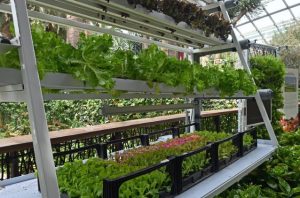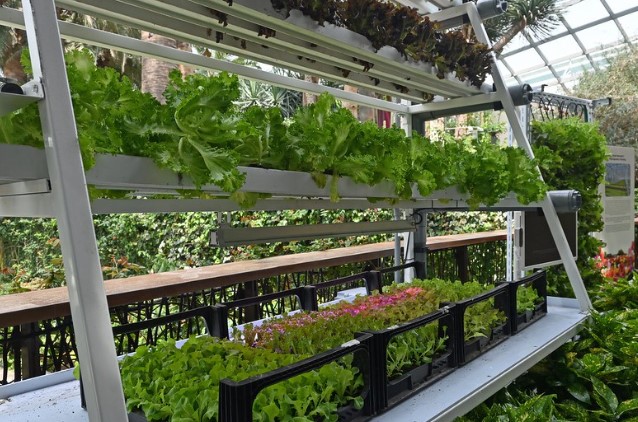Introduction to Hydroponic Gardening

Imagine growing plants without dirt, just using water with nutrients! That’s what hydroponic gardening is all about. It may sound like magic, but it’s a real and effective way to grow plants without soil. Hydroponics combines science and nature to give plants everything they need to grow. Let’s explore how this amazing system works and how it could turn anyone, even kids, into fantastic gardeners!
What Exactly is Hydroponics?
In a regular garden, plants grow in the soil, where they get water and nutrients from the ground. In hydroponic gardening, there’s no soil at all! Instead, plants get their nutrients directly from water. “Hydro” means water, so “hydroponics” is all about using water to help plants grow. By adding essential nutrients to the water, plants get everything they need to grow big and strong!
Why is Hydroponics Important?
There are many cool reasons why hydroponics is important. Here are just a few:
- Saves Space: Hydroponics allows plants to grow closer together, saving room.
- Uses Less Water: Hydroponic gardens use up to 90% less water than traditional soil gardens.
- No Weeds: Without soil, there are fewer pesky weeds to pull.
- Faster Growth: Plants can grow up to 25% faster in hydroponics than in soil.
- Great for Indoor Gardening: Hydroponics can be done inside, perfect for homes, classrooms, and even apartments!
How Plants Grow in Hydroponics
Let’s break down how a plant grows. Plants need three basic things to thrive: water, nutrients, and light.
- Water: Hydroponics uses water instead of soil. This water holds all the nutrients a plant needs and brings it right to the roots.
- Nutrients: Plants in hydroponic systems get their nutrients from the water. These nutrients include things like nitrogen, potassium, and phosphorus, all of which are important for plant growth.
- Light: Plants use sunlight to make their food through a process called photosynthesis. For indoor hydroponic gardens, special lights, called “grow lights,” can help plants get enough light even without the sun.
Types of Hydroponic Systems
There are a few popular types of hydroponic systems, each with its unique way of delivering water and nutrients to plants. Here’s a look at some common types:
- Deep Water Culture (DWC): In this setup, the plant roots float directly in the nutrient-rich water. The roots stay submerged, and an air pump keeps the water full of oxygen.
- Nutrient Film Technique (NFT): In an NFT system, a thin layer of water with nutrients flows past the plant roots. This keeps roots moist while letting them breathe.
- Wick System: This is a simple hydroponic setup that uses a “wick” (like a candle wick) to bring water to the plants. The wick absorbs water from a reservoir and carries it to the plant roots.
- Ebb and Flow (Flood and Drain): This system floods the plant roots with water and nutrients and then drains it away. This way, the plants get a steady supply of nutrients without staying wet all the time.
Starting a Simple Hydroponic Garden
Starting a basic hydroponic system at home is easy and fun. Here’s how you can make a simple system using things you might already have around the house.
- Choose a Container: Find a small container (like a plastic tub) to hold the water.
- Prepare Nutrient Water: You’ll need a special mix of nutrients for hydroponics. This can be found in stores or online.
- Add Plants or Seeds: Place seeds or small plants in a container with small holes for roots. Net pots, plastic cups with holes, or sponges can work well.
- Oxygenate the Water: Use an aquarium air pump to add bubbles to the water. This helps bring oxygen to the roots.
- Monitor Light and Nutrients: Keep the system somewhere sunny, or add a grow light to help the plants grow.
Benefits of Hydroponic Gardening
Hydroponics has some exciting advantages:
- No Messy Dirt: No soil means a cleaner setup.
- Control Over Nutrients: You know exactly what nutrients the plants are getting.
- Faster Plant Growth: Plants can grow up to twice as fast as in soil!
- Ideal for Any Season: Grow vegetables or herbs any time of the year indoors.
Fun Hydroponic Project Ideas
Here are some fun, kid-friendly projects to try out with hydroponics:
- Lettuce Jar Garden: Grow a small lettuce plant in a mason jar filled with nutrient-rich water.
- Herb Wall: Use small containers on a wall to grow herbs like basil and mint.
- Strawberry Hydroponics: Strawberries are fun to grow in hydroponics and taste delicious when fresh!
Common Hydroponic Terms
Let’s learn some common hydroponic terms to sound like pros:
- Nutrients: Essential “food” plants need to grow, like vitamins and minerals.
- pH Level: How acidic or alkaline the water is; this affects how well plants absorb nutrients.
- Grow Light: A special light that helps plants grow when there’s not enough sunlight.
Caring for a Hydroponic Garden
Hydroponic gardens need a bit of attention to stay healthy. Here are some simple ways to care for your hydroponic setup:
- Check the Water Level: Make sure there’s always enough water in the container.
- Clean the System Regularly: Every few weeks, clean the container to prevent algae from growing.
- Monitor Nutrients: Add more nutrients every couple of weeks to keep plants healthy.
- Observe Plants for Changes: Look for signs that plants might need help, like yellowing leaves (which might mean more nutrients are needed).
Troubleshooting Hydroponics
Sometimes things can go wrong, but here are a few tips to fix common problems:
- Yellow Leaves: This usually means the plant needs more nutrients.
- Algae Growth: Algae can grow in water systems; keep the system clean and change the water regularly.
- Slow Growth: If plants aren’t growing well, check if they’re getting enough light.
The Future of Hydroponic Gardening
As the world’s population grows, we’ll need new ways to grow food. Hydroponics could be the answer! It’s possible to grow food in places where soil and space are limited, like big cities or even on spacecraft. Scientists are exploring hydroponics to grow fresh food for astronauts!
